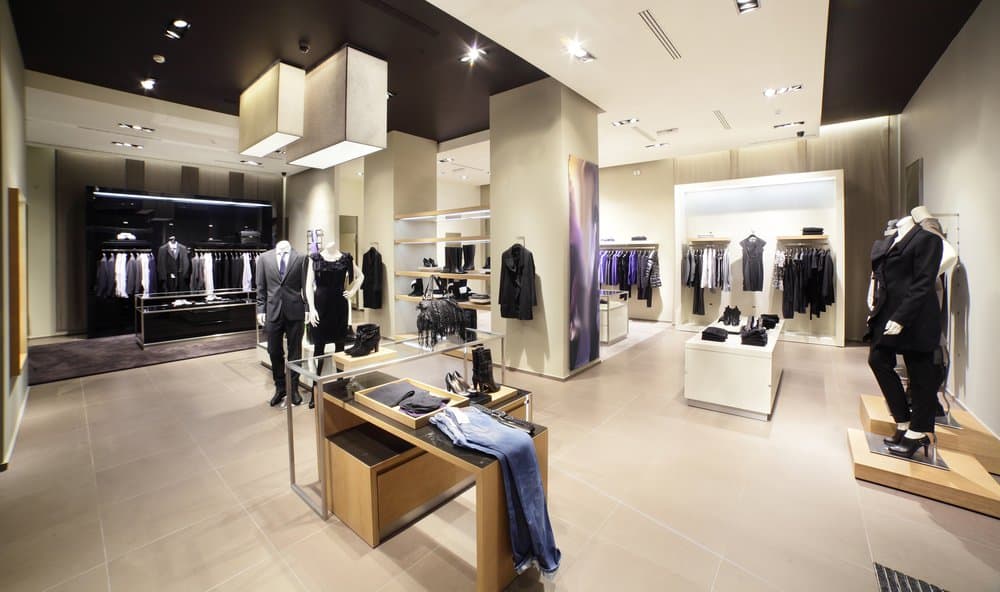I had a friend doing some customer experience work for one of the biggest brands in the world. She told me they had made a sweeping commitment to dramatically enhance their customer experience. It sounded great!
I was so curious about it on my last visit to NYC, so I visited their flagship store.
If they were better now, then they must have been pretty horrendous before. I wasn’t greeted at all. Unless that is, you count the large, intimidating security guard at the front door.
Instead, all the employees remained engaged in mindless gossip and chatter. It looked like fun!
I was able to walk around the store and leave without much of a peep. I wonder how many others are able to walk in and walk out without any interaction from the staff?
Earlier that same week, I’d read an article in the WSJ about the classic Saks on Fifth Avenue store and its massive investment to recreate itself, and build a truly memorable experience for shoppers. So I visited there as well and was again disappointed by what I saw.
Aside from the colorful lights and fancy handbags, the people and the feeling hadn’t changed from a previous visit a year earlier.
Just because your store offers whiskey to shoppers or coffee to browsers, doesn’t mean you’re creating an “incredible customer experience.”
An incredible customer experience is warm and welcoming. It offers value before selling. Your people diagnose before prescribing. Most importantly, it leaves nothing to chance. Every customer gets the same baseline minimum attention (Obviously some customers will get much, much more attention – but there’s no excuse to let any portion of your customers just ‘Fall through the cracks’).
It seems like every time I hear about a “radical investment in customer experience” from larger companies, what we get instead is just a little extra lipstick or a new coat of paint.
The start of the experience and the end of the experience–these are often viewed as the most critical components of the entire customer experience. There are decades of psychological research on the Primacy and Recency effect – namely, we remember things best that happen at the start, and at the end of an experience, with most of what happens in the middle fading quickly.
Practically, what this means is that we can create remarkable and memorable moments throughout, but if we mess up at the start or the end, that’s what will be remembered.
The doorman at the hotel is often viewed as the most important person in the hotel experience.
The host at the restaurant is the most probable cause of your diners telling others about a great experience or a lousy one (the food is almost always secondary to this!)
The associates in the retail shop or the bakery that warmly greet entering customers or continue to start at their phones and ignore the opportunity to simply say hi!
The airline attendant at the podium who doesn’t care what sort of day you’re having as it likely pales in comparison to his.
The B2B company who is responsive and fast until the purchase order is signed, and then they’re MIA. Their sales rep has moved on to the next lead, and the customer has been passed off to an engineer who is unaware of the million promises made.
I could go on and on.
Yet, all too often these important points of contact are the lowest paid, quickest trained, seemingly indispensable employees that organizations have.
Why?
Given what we know and given the examples shared above, you would think it makes sense to invest in more training, more resources, more qualified people and so forth. But most companies don’t think that way.
Most companies try and solve customer service issues by looking at solving problems after the fact.
This is contingent action and a great place for a consultant to make a living. But the real results in all organizations revolves around the preventive.
Your Challenge For This Week:
When was the last time you reviewed how your customer experience starts and how it ends?
Spend the time and map it out.
When was the last time you provided further education, training, or opportunities for your people on the front lines to shine?
When was the last time you asked for front-line employees what tools or resources they need to be more successful?
When was the last time you asked your customers about the way their experience starts and ends? And no, I don’t mean a silly NPS (net promoter) survey!
When was the last time you commissioned an audit of your customer experience to ensure reality matched your expectations?
Best,
Noah
